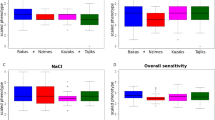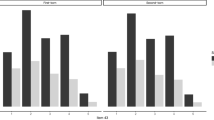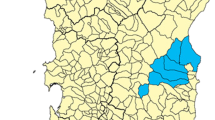Abstract
FOX1 first observed that people differed in their ability to taste phenylthiourea, and it was found (Blakeslee and Salmon2, Blakeslee3, Snyder4,5) that these differences were genetically determined. The distribution of taste thresholds to this substance in all populations so far studied has been found to be bimodal. Familial investigations indicate that the two classes of individuals, tasters and non-tasters, that is, those relatively sensitive and those relatively insensitive to phenylthiourea, differ in respect of a single gene pair, the tasters being homozygous or heterozygous for the dominant allele, the non-tasters homozygous for the recessive allele. Between one quarter and one third of all individuals tested in various populations appear to fall into the recessive class. Fisher, Huxley and Ford6 have described observations which suggest that similar differences may exist among anthropoid apes. They have pointed out that this implies the existence of a stable, balanced polymorphism, and that, for such a system to occur, the heterozygotes should have had some selective advantage over the two types of homozygotes.
This is a preview of subscription content, access via your institution
Access options
Subscribe to this journal
Receive 51 print issues and online access
$199.00 per year
only $3.90 per issue
Buy this article
- Purchase on Springer Link
- Instant access to full article PDF
Prices may be subject to local taxes which are calculated during checkout
Similar content being viewed by others
References
Fox, A. L., Proc. U.S. Nat. Acad. Sri., 18, 115 (1932).
Blakeslee, A. F., and Salmon, M. R., Eug. News, 16, 105 (1931).
Blakeslee, A. F., Proc. U.S. Nat. Acad. Sci., 18, 120 (1932).
Snyder, L. H., Science, 74, 151 (1931).
Snyder, L. H., Ohio J. Sci., 32, 436 (1932).
Fisher, R. A., Ford, E. B., and Huxley, J., Nature, 144, 750 (1939).
Salmon, T. N., and Blakeslee, A. F., Proc. U.S. Nat. Acad. Sci., 21, 78 (1935).
Falconer, D. S., Ann. Eug., 13, 211 (1947).
v. Skramlik, E., Jena Z. Med. Nat., 76, 50 (1943).
Snyder, L. H., and Davidson, D. F., Eug. News, 22, 1 (1937).
Riddell, W. J. B., and Wybar, K. C., Nature, 154, 669 (1944).
Hopkins, C. Y., Canad. J. Res., B, 16, 341 (1938); 20, 268 (1942).
Chesney, A. M., Clawson, T. A., and Webster, B., Bull. Johns Hopkins Hosp., 43, 261 (1928).
Webster, B., and Chesney, A. M., Amer. J. Path., 6, 275 (1930)
Astwood, E. B., Bissel, A., and Hughes, A. M., Endocrinology, 37, 456 (1945).
Author information
Authors and Affiliations
Rights and permissions
About this article
Cite this article
HARRIS, H., KALMUS, H. Genetical Differences in Taste Sensitivity to Phenylthiourea and to Anti-thyroid Substances. Nature 163, 878–879 (1949). https://doi.org/10.1038/163878b0
Issue Date:
DOI: https://doi.org/10.1038/163878b0
This article is cited by
-
Taste genetics and gastrointestinal symptoms experienced in chronic kidney disease
European Journal of Clinical Nutrition (2015)
-
Reliability of Threshold and Suprathreshold Methods for Taste Phenotyping: Characterization with PROP and Sodium Chloride
Chemosensory Perception (2009)
-
The association between phenylthiocarbamide (PTC) tasting ability and psychometric variables
Behavior Genetics (1983)
-
Die gerichtsmedizinische Bedeutung der Greschmacksdifferenz f�r Phenylthiocarbamid. Grundlagen, Probleme, Erfahrungen
Deutsche Zeitschrift f�r die Gesamte Gerichtliche Medizin (1952)
-
�ber den Geschmack von p-Acetamino-benzaldehyd-thiosemicarbazon
Die Naturwissenschaften (1950)
Comments
By submitting a comment you agree to abide by our Terms and Community Guidelines. If you find something abusive or that does not comply with our terms or guidelines please flag it as inappropriate.



